Tricks for Taking The Lake
by Arthur Blodgett While most major championships will be contested on open water, lake regattas mean just as much to the people contesting them and test sailors' skills in new ways. The portion of the sailing world that rolls up to a boat ramp, rusty hoist, or friendly waterside lawn for some one design yachting against friends deserves to be celebrated! With short courses, flat water, and constantly oscillating winds, kinetics don't really help (Ben Ainslie: "Rocking in flat water is slow") so all the old guys are fast. What we are left with is a game of strategy where picking your way through the wind's vagaries is the determinative skill. I recently raced the Whitmore St John's Regatta, contested in 18 Snipes on Lake Quassapaug in the middle of Connecticut. With five approximately 40 minute races around Olympic courses, we had ample opportunity to hone our lake sailing techniques. Here are the strategies that contributed to our win. ...
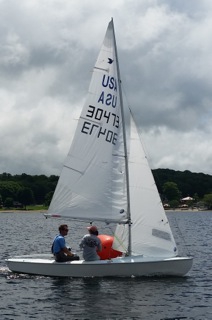

by Arthur Blodgett
While most major championships will be contested on open water, lake regattas mean just as much to the people contesting them and test sailors’ skills in new ways. The portion of the sailing world that rolls up to a boat ramp, rusty hoist, or friendly waterside lawn for some one design yachting against friends deserves to be celebrated!
With short courses, flat water, and constantly oscillating winds, kinetics don’t really help (Ben Ainslie: “Rocking in flat water is slow”) so all the old guys are fast. What we are left with is a game of strategy where picking your way through the wind’s vagaries is the determinative skill.
I recently raced the Whitmore St John’s Regatta, contested in 18 Snipes on Lake Quassapaug in the middle of Connecticut. With five approximately 40 minute races around Olympic courses, we had ample opportunity to hone our lake sailing techniques. Here are the strategies that contributed to our win.
…
Ease in the Lifts. We sailors all know we should be sailing the lifted tack – the tack that takes you to the mark at a closer angle – so I won’t rehash this. When we initially get lifted, the sails need to get reflexively eased; then trimmed smoothly in as the driver heads up. This allows you to develop speed from lifts. If we are in a lift, the next shift will be a header, so footing over the top of the fleet is the percentage move. Plus, it is just faster to instantly establish flow by easing, versus the alternative of stalling the statically trimmed sail while we wait for the rudder to turn the boat up. Ease more on the Jib than on the main, to facilitate steering up. Even in catboats like the Opti and Laser I have found a quick ease then trim-head up to be the fastest way to respond to lifts.
Study Breeze on the Water. Before the start, stand up and see where the first two puffs of the race are, and predict how long they will take to reach you. Often I get insight from my crew, like: “We will be starting in a right middle puff, but should then get a lefty.” (That means we should start to leeward of the pack, but a ways up from the pin.)
If the number of wind shots I took were actual shots, they would make even a hard-core partying frat-boy pass out. I want to know which end of the line is upwind and by how much, and I sight across my boat when head to wind to determine this. In the first race on Sunday at Quassy, we did a wind shot with only 1:20 in the sequence, saw that the pin was suddenly favored by 15 degrees, sailed there and port-tacked the fleet just after the gun. When not taking shots, I like to hover just over the line in the middle until about two minutes to go, just to keep my options open and get a good look at the course.
Freed from the constraints of having to set up in a big fleet, the lake start is the time for daring and opportunism. Find and dominate the favored end, but also think one step ahead to the first shift!
Sail to the puffs through the race. As All-American and Opti Sail plagiarist Brian Bissel wrote, “Pressure is King.” Our order goes something like – Sail to the puffs, once we reach them get on the Lifted tack; use the Puff and the Lift to get between the fleet and the next mark. Check please!
Some More Notes on Puffs: The size and shape of puffs are dependent on the surrounding geography, and the land and water temps. The speed at which puffs move on the water is exponentially dependent on the windspeed – for example, a 6kt puff may move at 2kts over the water, while a 10 kt puff may move at 7kts or more. A 18kt puff moves over the water at close to 18kts. Frank Bethwaite has some more thoughts on this in his indispensable book “High Performance Sailing;” suffice it that determining the nature of the puffs is critical. We have all tacked just shy of a puff that never reached us, and less noticeably, we have all sailed through and out of a puff without realizing its full potential. If the breeze is under 7kts, dig into puffs; if it is greater, position yourself under it, and have it come down on you.
Another neat thing about puffs is their fanning effect. Picture the vectors within the puff like a Japanese fan across the surface, with the hilt as the point of air-on-water impact. If we sail outwards from the middle of the puff, we realize the greatest lift. Being the pressure-fiend that I am, I will preferably sail just past the middle of the puff before tacking and riding it out to the original side – but that is balanced with making use of the lifts on the outside edges of puffs upwind.
Change Gears for Strategy. Foot in the lifts, and really, really foot through the lulls. It’s critical to get the crew weight to leeward and forward, the jib eased, the main twisted (no vang) and the boat in FOOT mode for lulls. Get the painful process of sailing through a lull over as quickly as possible! If you are headed, but up to speed and in pressure, you can trim and point, and you will eventually get to point higher in any puff, after you get superior boatspeed. Generally foot on the long tack, but pinch up if you see a fanning puff on your shoulder that you can just get to the edge of.
Strategy > Tactics. Always prioritize the shifts over the other boats. I have no problem tacking underneath someone in the biggest puff on the course, or taking a duck if it keeps me on the lifted tack. Focus on the wind on the water more than other boats. Your competitors’ speed and direction is not as relevant as it is on the ocean, as they are probably sailing in a completely different breeze than you! Stay in phase with the wind on your part of the lake.
Still, every crossing situation will present a tactical consideration. I let my strategy decide it: if I am in phase I cross, or duck and let cross. If I am out of phase but consolidating, I will either lee bow, or force them to tack before tacking.
Downwind: Ride the Puffs Down. Puffs move…downwind, so we stay in them longer by sailing ____________. You guessed it! Go print yourself a fake Harvard Diploma. On any run or deep reach, it will pay to sail as low as your boat permits – in the Snipe we max ease the Jib halyard, blow the vang, and heel to windward – when in a superior spot of wind. This will give you the depth so that you can reach up and sail a faster angle in the next lull. The exception is a tight reach where you need to stake out the high lane for clear air and getting the puffs first. The exception to that exception is when the high lane puts you up under a boat to windward who… which brings me to…
Keep a Chill Composure. When the exact above scenario played out in the very first race where we had an 8 boatlength lead before getting, as the locals put it “Quassified” (passed both to leeward and to windward) I maintained my always stoic demeanor, as anyone who has sailed with or against me can attest…
In all seriousness, you cannot get too caught up in the immediate results of lake sailing. Don’t be bothered by the boat that bangs a corner and does great, or the boat that sails from ten boatlengths back on your hip to bow even with you. Don’t get frustrated by random outliers. If you stay on the lifted tack and the best pressure you can get, you are playing the percentages!!!
We led at the first mark in four races and lost the lead on 75 percent of them, but stayed consistent enough throughout for a comfortable win. Trust the process of sailing the long lifted tack – the race is always from here on out! Between races, do whatever helps you relax, whether it’s singing, running, drinking or Yoga – I know successful sailors who engage in each of these routines. I prefer a pre-race nap in the sun on my lifejacket.
See you at the upcoming Red Neck Yacht Club Annual.
Arthur Blodgett
Comments for this post are closed





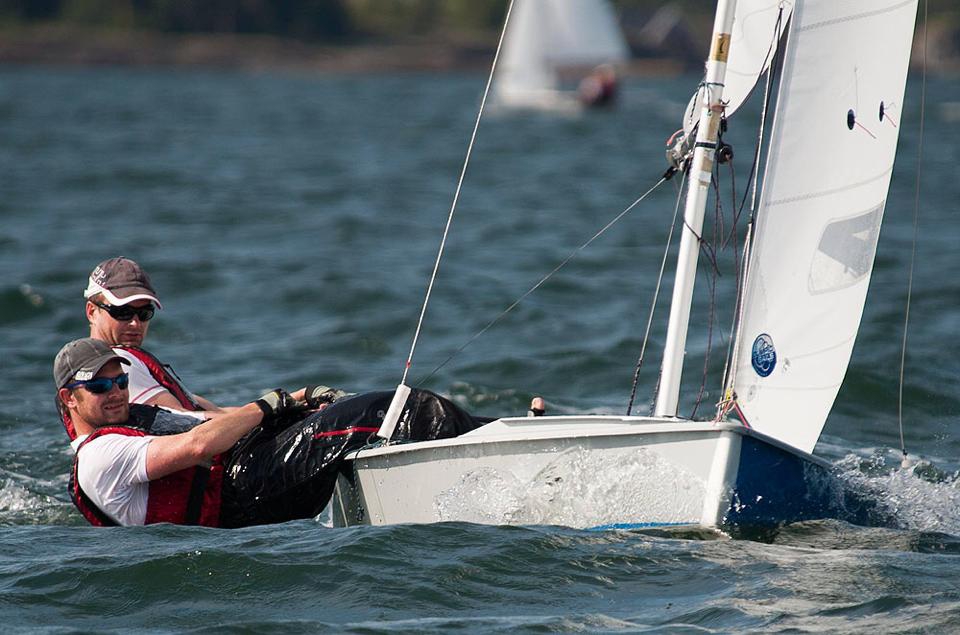
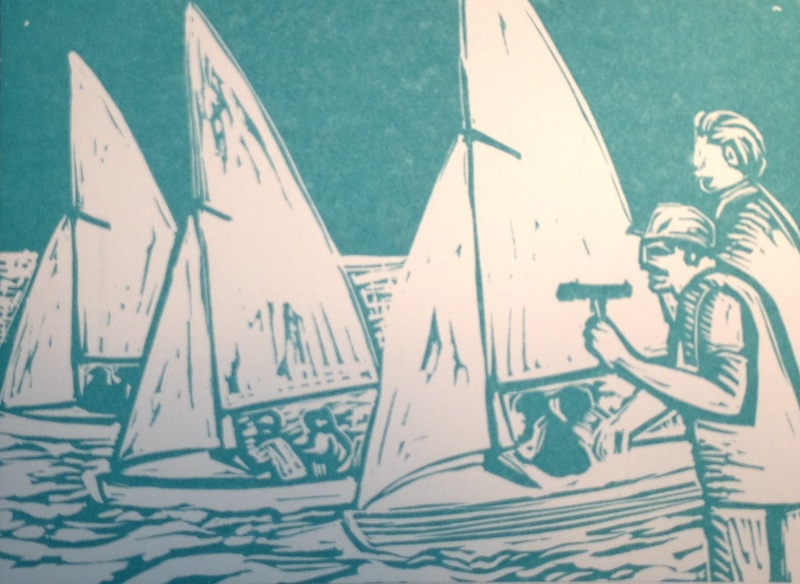




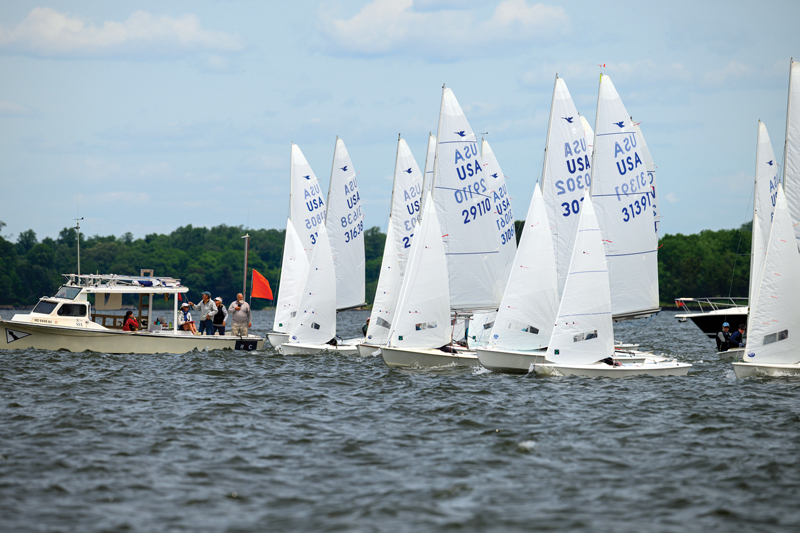
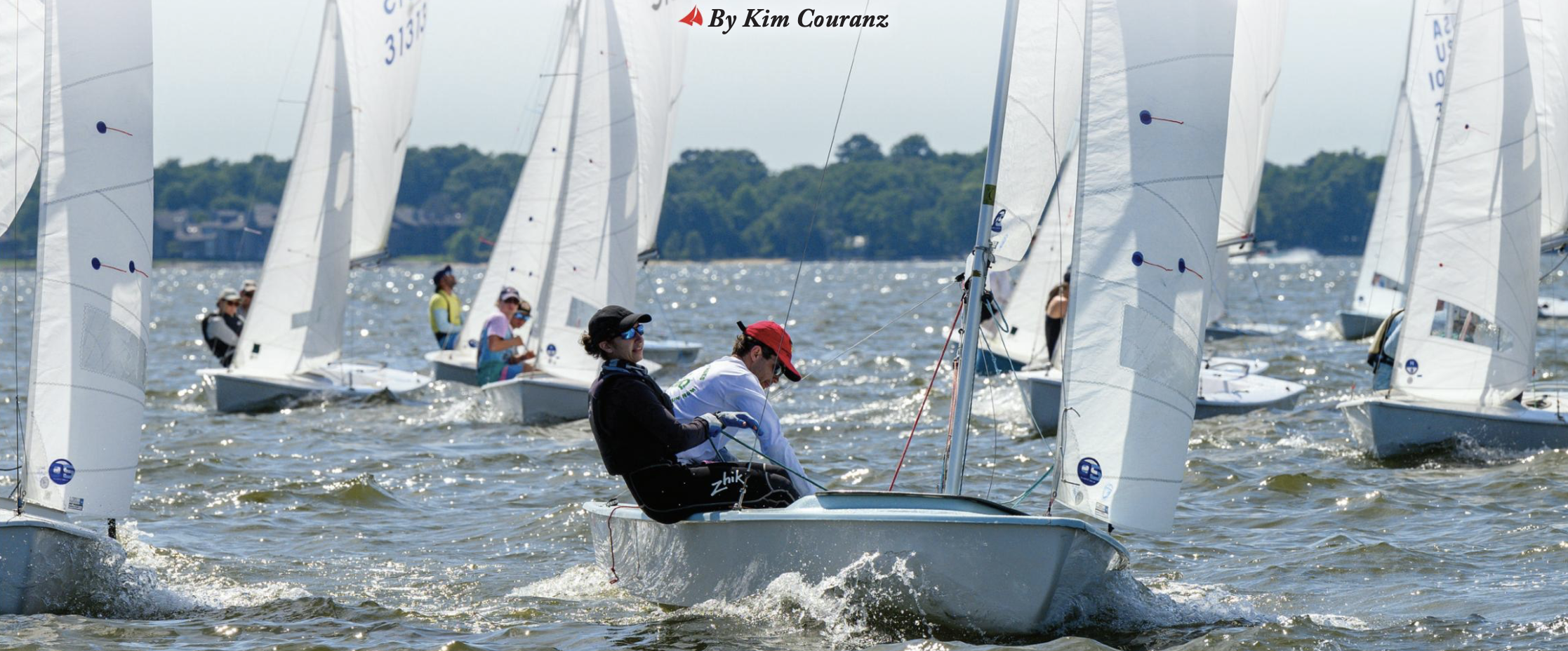
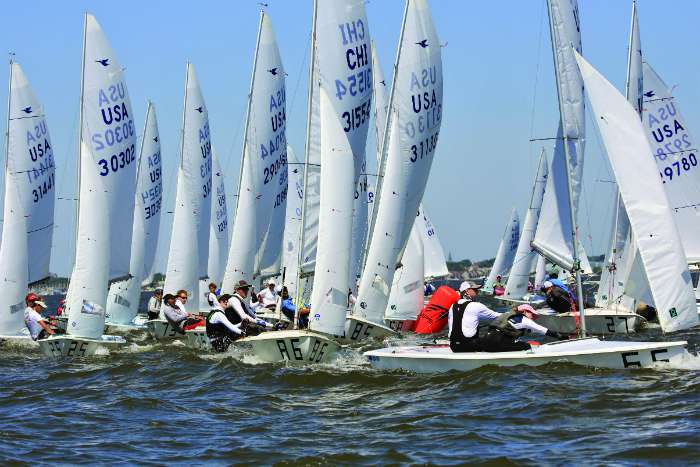
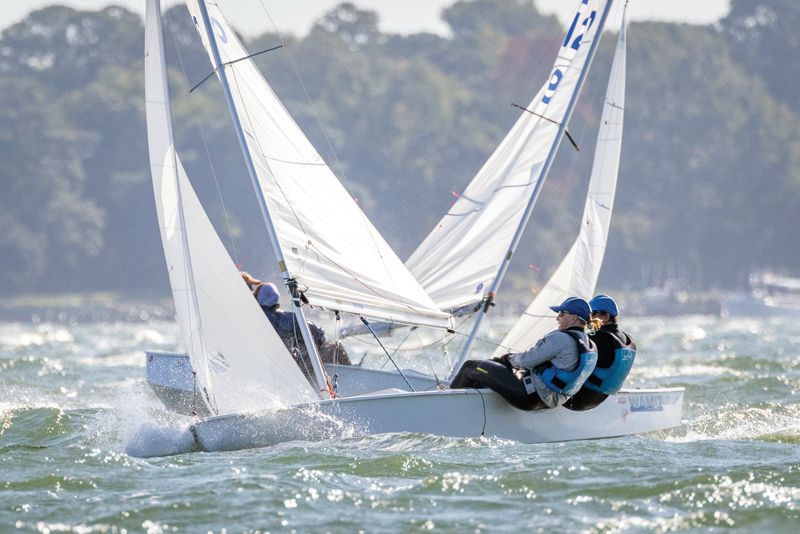
0 comments